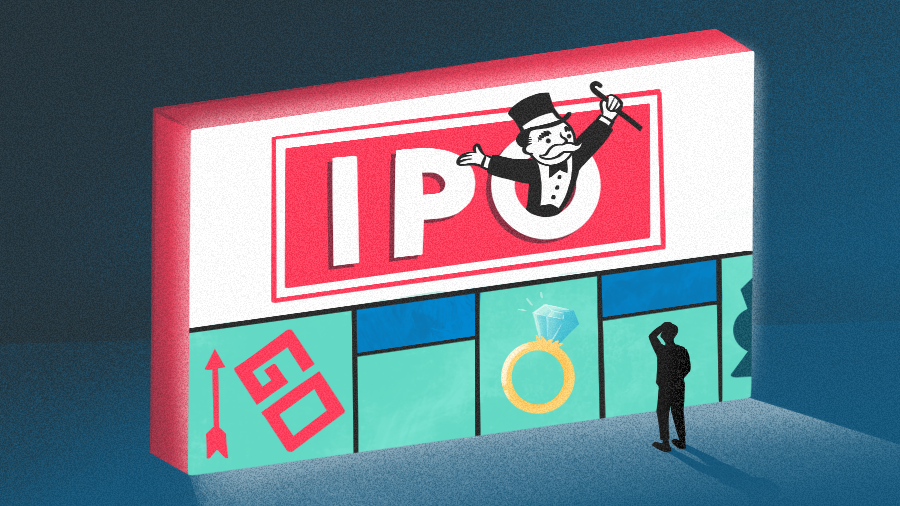It’s been more than a year since the IPO pipeline’s shutoff valve was turned on, and so far the market has shown few drops of a comeback.
While in the last half year or so huge private companies like Instacart, Navan (formerly TripActions) and Stripe have made overtures they would go public, none seem very close — and those who watch IPOs don’t expect much action for at least the next several months and maybe much longer.
Search less. Close more.
Grow your revenue with all-in-one prospecting solutions powered by the leader in private-company data.
“For 15 months there has been no ability to bring a company to market,” said Jerry Serowik, managing director and head of capital markets at investment bank Cohen & Company Capital Markets. “Right now there is no ability to price a traditional IPO.”
Looking back
In market downturns, IPO numbers obviously also are going to take a tumble as investors’ confidence and stomach for risk become lower. However, in past downturns such as the dotcom bust and the global financial crisis in 2008-09, the IPO market came back within two years.
Even with the banking and market turbulence in 2008-09 — which went well beyond the tech sector — IPOs bounced back by 2010.
The current down market already has lasted more than a year and shows few signs of lightening. While more than 330 U.S.-based, VC-backed companies valued at $1 billion or more went public in 2021, that number plummeted to just over 80 last year and is not even on that pace for this year, per Crunchbase data.
While big-name, VC-backed companies like Rivian and Robinhood went public in the second half of 2021, the market has been relatively quiet since, with many companies going the SPAC route to the public markets.
“I wasn’t anticipating a lot of activity until at least the second half of the year,” said Ran Ben-Tzur, a partner at law firm Fenwick & West.
That estimate may now be pushed back to 2024, Ben-Tzur said.
While the year started off pretty good with investors beginning to have constructive conversations with late-stage companies, the environment has died down, he said.
“With Silicon Valley Bank and the overall banking situation, the overall market is currently not conducive to capital market transactions,” said Ben-Tzur, adding there have been other “black swan” or black swan-like moments in the last year that have stifled the market.
Serowik adds while the window was open briefly in January, it quickly shut again — and now when it opens again likely depends on when the negativity surrounding the equity markets dissipates.
The Chicago Board Options Exchange‘s Volatility Index — or VIX — is a popular tool used to measure the stock market’s expectation of volatility. From about mid-Janaury to mid-February the index fell below 20 — the accepted threshold for new entries into the IPO market.
For most of March, it has been well above 20.
“Above 20, it’s a no-go for IPOs,” Serowik said.
Lasting freeze
Of course, one reason many companies have been able to push back IPO plans is the immense amount of capital now available on the public markets.
For example, Meta (formerly Facebook) had raised about $2.4 billion before its IPO in 2012, which included a huge $1.5 billion round in the secondary market, per Crunchbase data. On the other hand, Stripe has raised $8.7 billion to date — which includes the massive $6.5 billion Series I it just raised to help provide liquidity to current and former employees and help offset a tax bill that will come due when it modifies employees’ stock grants that are set to expire.
Many VC-backed startups fattened up during venture’s high-spending days of years past and still have money left in their coffers — especially after many enacted cost-cutting moves in the past year or so to preserve cash.
“IPO candidates raised a lot in 2021, and in the last six to nine months are in hunker-down mode,” Ben-Tzur said.
The one sign there has been for the IPO market possibly coming back could be there was more movement in follow-on offerings late last year and even in the first few months of this year, he said.
“We’ll see if that continues after companies announce first-quarter earnings,” Ben-Tzur said.
Don Butler, managing director at Thomvest Ventures, said many companies are still waiting for valuations to settle after the past year of upheaval on the private markets — and can do so because they are better capitalized than ever.
However, in addition to having cash in the bank, it also has gotten pricier to go public, Butler said. Part of that is the fact that director and officer insurance has gotten more costly due to many SPACs imploding and the lawsuits that followed, he added.
There also is the added variable that many of these startups have slowed growth through the last year-plus — now putting them behind the eight ball if they are eyeing the public market.
“You don’t want to have those numbers,” Butler said. “Now you are valued less (when you go public) and have different comparables. These companies may have to raise fresh capital to get their growth numbers back up before they can IPO.”
That may not happen until 2025, Butler said.
“It all depends on when (investor) confidence comes back,” he said.
Illustration: Dom Guzman

Stay up to date with recent funding rounds, acquisitions, and more with the Crunchbase Daily.





![Illustration of a guy watering plants with a blocked hose - Global [Dom Guzman]](https://news.crunchbase.com/wp-content/uploads/quarterly-global-3-300x168.jpg)
67.1K Followers